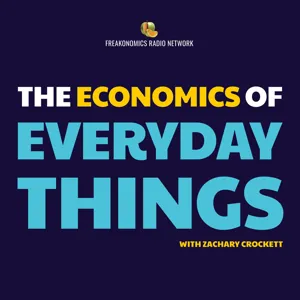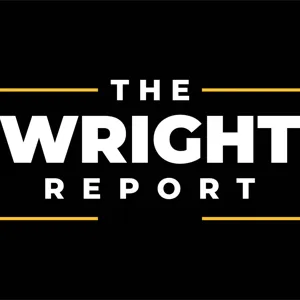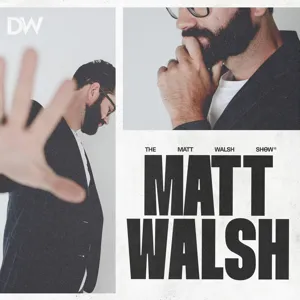Podcast Summary
The Ancient Horseshoe Crab and Its Modern Medical Significance: Horseshoe crabs, an ancient species, provide valuable blue blood for pharmaceutical testing, including COVID vaccines and insulin, but their harvesting raises ethical concerns for environmentalists.
Horseshoe crabs, an ancient species with a bizarre appearance, have become essential to modern medicine through their valuable blue blood. This blood is used in pharmaceutical testing for various medications, including COVID vaccines, insulin, and injectable drugs. The commercial market for horseshoe crabs began as fertilizer and chicken feed in the 19th century, but their value increased significantly in the 1960s when they were discovered to be useful for detecting bacterial contamination in medical equipment. Today, the growing demand for horseshoe crab blood is at the center of an ethical debate between environmentalists and biomedical firms, with some arguing that the harvesting methods are harmful to the population and others emphasizing the importance of the medical applications. Denafigh Maren, a wildlife crime reporter at National Geographic, sheds light on this intriguing topic and its complex implications.
An ancient marine species' role in ensuring medical product safety: The horseshoe crab's unique blood properties help detect bacterial endotoxins in medical products through the LAL test, ensuring safety for millions of people annually.
The humble horseshoe crab, an ancient marine species, plays a crucial role in ensuring the safety of medical products through its unique blood properties. From an evolutionary perspective, horseshoe crabs have a hypersensitivity to bacteria, which causes their blood to clot and form a gel wall around the bacteria. This sensitivity is what led to the discovery of Limulus Ameebocyte Lysate (LAL) test, an alternative and cost-effective method for detecting bacterial endotoxins in pharmaceutical products. The LAL test, approved for use in 1977, is now used extensively in the industry, with over 80 million horseshoe crabs used annually. The test is essential for ensuring the safety of various medical products, including implantable devices, insulin, flu shots, vaccines, and even COVID-19 vaccines. The collection of horseshoe crab blood is done humanely and sustainably, with regulations in place to protect the species. The discovery of the LAL test not only demonstrates the importance of biodiversity but also the potential for finding innovative solutions in nature to address human health needs.
Impact of horseshoe crab harvesting on Atlantic Coast species: Horseshoe crabs are essential for medical testing, but their harvesting for LAL production may negatively impact their populations and ecosystems, with long-term consequences yet to be fully understood.
The demand for horseshoe crab blood for medical testing has significant impacts on these Atlantic Coast species, yet the full extent of these effects on their long-term survival remains uncertain. Horseshoe crabs, with four known species, are essential for producing Limulus Amebocyte Lysate (LAL), a critical component in biomedical testing. Three of these species inhabit waters around Asia, while the LAL-producing horseshoe crabs are found along the Atlantic Coast from Maine to Mexico. During their annual egg-laying cycle, females are surrounded by males vying for their attention, making them vulnerable to being beached and harvested by biomedical firms. Five US companies, all along the East Coast, are licensed to harvest these crabs. The industry is secretive, and the firms declined interviews. Hundreds of crabs are caught, their barnacles removed, and they're transported to labs for blood extraction. The distinctive blue, milky blood is used to create LAL, which is then used in medical testing. However, the long-term consequences of this harvesting process on horseshoe crab populations and their ecosystem are not fully understood.
Horseshoe crabs: Bled for biomedical testing and sold as bait: Horseshoe crabs face threats from both the biomedical industry, where they're bled for testing and many die, and the fishing industry, where they're caught as bait, potentially reducing their populations by 30% in the next 40 years.
The harvesting of horseshoe crabs for their blood, used in biomedical testing, is a significant issue. These crabs are bled out, with approximately 15% dying in the lab, and many more likely dying after being released. The practice also raises concerns about the crabs' breeding and future populations. Additionally, horseshoe crabs are also caught and sold as bait, further threatening their numbers. The International Union for Conservation of Nature lists American horseshoe crabs as vulnerable, and the situation is even more dire for the three species of Asian horseshoe crabs, which are often bled to death and sold for food. The combined threats from the biomedical and fishing industries could potentially reduce horseshoe crab populations by 30% over the next 40 years.
Impact of Horseshoe Crab Overharvesting on Ecosystem and Industry: The declining population of Atlantic Horseshoe Crabs due to overharvesting for bait and biomedical industry could disrupt food sources for species like red knots and lead to a crisis for endotoxin testing industry. Researchers are exploring synthetic alternatives but their costs make them unattractive for now.
The declining population of Atlantic Horseshoe Crabs is causing concern for conservationists due to the potential impact on other species that rely on them as a food source. The red knot shorebird, for instance, feeds on horseshoe crab eggs during its migration. Overharvesting of horseshoe crabs for use as bait and in the biomedical industry, particularly for endotoxin testing, has contributed to their decline. While some coastal states have implemented regulations, the biomedical industry faces little restriction. Horseshoe crab blood is currently the only widely available alternative for endotoxin testing, and a potential shortage could lead to a crisis for the testing industry. Researchers are exploring synthetic alternatives, but their added costs make them unappealing to most companies for the time being. As a result, horseshoe crabs will continue to be harvested, potentially disrupting their mating rituals and long-term survival. For the economics of everyday things, it's important to consider the impact of overharvesting and the potential for synthetic alternatives on species populations and industries.
Exploring lesser-known terms: The Freakonomics Radio Network uncovers intriguing topics and introduces listeners to lesser-known words like Lemulus and amnysite, broadening their knowledge and understanding.
The Lemulus and amnysite are lesser-known terms discussed in a podcast by The Freakonomics Radio Network, which explores the hidden side of everyday phenomena. These words might be challenging to pronounce, but they serve as examples of the intriguing and often complex topics that the podcast covers. The Freakonomics Radio Network, which can be accessed through platforms like Stitcher, offers listeners an engaging and thought-provoking exploration of the world around them, making it a valuable resource for those seeking to broaden their knowledge and understanding of various subjects.






